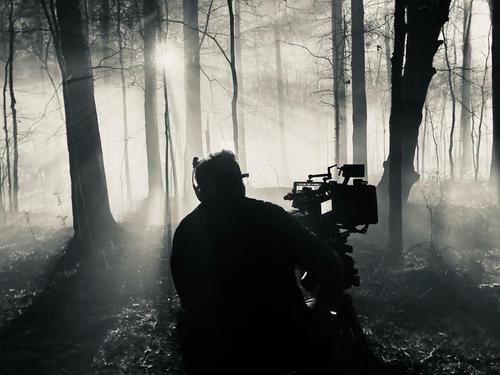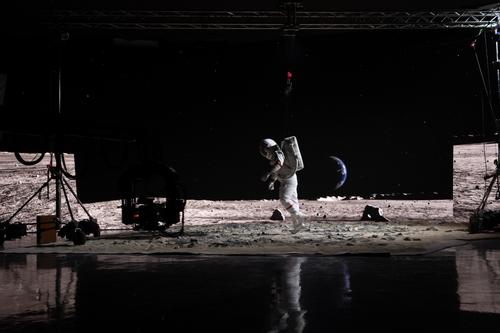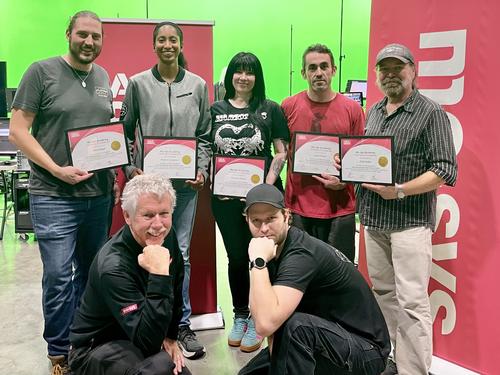An introduction to object tracking
Object tracking is becoming more and more essential in modern film and broadcast. An increasing dominance of CGI and digital environments has made highly accurate object tracking technology incredibly useful.
What is object tracking?
Object tracking and object detection can be used to augment a target object into a scene, ensure that virtual characters share a line-of-sight with actors and even to add digital reflections and shadows. Whatever the reason you need object tracking, it’s important to consider the range of options and levels of object tracking that are available to you.
In this article, the Mo-Sys team review a range of object tracking camera options, from the more traditional image tracking, through to our own StarTracker system. Whatever you are looking to gain from your object tracking experience, there are a range of systems and techniques at your disposal.
Types of object tracking
Image-based tracking
Image tracking relies on the use of a green screen to create a mask comprised of a cut-out of an actor/object. Based on their positioning, the tracker can then calculate the position of the plane.
Image tracking is a relatively cheap and easy method of object tracking. However, it is a somewhat inaccurate method, usually tracking positions by a margin of +/-5cm from the image plane to the camera.
Radio tracking
Radio trackers use a beacon and a system of receivers set up in a studio for object tracking. A step-up from image tracking in terms of quality, with four beacons set up, a radio tracker can track a large area of approximately 30 x 30m in full 3-dimensions.
As with image tracking, there is a degree of inaccuracy to be expected when using radio tracking, once again, creating a potential margin of +/-5cm. The main benefit of this tracking over image tracking is down to the number of target objects that can be tracked at any one time. Each object within the tracking area can be assigned a roaming beacon that allows the device to track dozens of objects. It is important to remember that radio tracking will only track the position of an object, not its orientation.
Active LED tracking
Initially provided by OptiTrack, Active LED tracking is one of the more precise ways of tracking objects and actors. It works by utilising a blinking LED and a minimum of two cameras to accurately position a target. With four cameras that are able to turn, LED tracking allows users to track objects in full 360º.
The cameras track the blinking LEDs mounted onto an object with a battery-powered tag. Using one LED will allow the cameras to track the position of the object, but by using more than one you will also be able to track the object’s orientation. An LED tracking system can accurately track objects down to the millimetre in a 6 x 6m space, making it ideal for precision tracking in a limited space. However, to expand the tracking area when using this technology requires installing a proportional amount of cameras, dramatically increasing the cost. The OptiTrack system typically requires 12-16 cameras for a 12 x 12-metre area.
Infrared Tracking
Most commonly used by the HTC Vive and the Vive Tracker for VR, this tracking method uses two infrared stations to create a sweeping infrared laser line to trigger small sensors on the receiver. By comparing the timing of when these sensors are triggered, angles and position can be calculated with high accuracy and low latency. Although a relatively simple and precise solution that offers great value for money, this method is restricted to a limited area for tracking approximately 10 x 10m.
In addition, HTC Vive suffers from occlusion when tracking multiple objects and it can be difficult to coordinate when using other methods of tracking. Furthermore, when switching off and on again, the Vive tracker gives a slightly different position to previous position. Most importantly, Vive products cannot be synced with genlock which causes instability for live broadcasting.
Mo-Sys StarTracker
Mo-Sys’ patented StarTracker technology is the most precise 3D object tracking available, this is why it is primarily used by broadcasters and film makers for real-time camera tracking. Particularly, in terms of orientation, StarTracker stands out from the crowd with its ability to track the most minute camera movements with ease.
![]()
The main benefit of using StarTracker for object tracking is that it can be far more cost-effective thanks to the patented retro-reflective sticker method. By simply adding more stickers and mapping them, means you can increase the tracking area exponentially. This means you only need one optical sensor to track one object and can be achieved across a virtually unlimited space.
![]()
It is worth noting, however, that StarTracker is less compact than the LED system used by OptiTrack. It relies on larger electronics and a battery to interact with the markers placed on the studio ceiling.
Object tracking faqs
What is the difference between object tracking and object detection?
Object tracking applies deep learning; utilising a program that tracks a set of objects that have each been given a unique identification in video frames. Object detection utilises computer technology linked to computer vision that detects real-time objects in images or videos such as face detection or cars.
Does object detection use machine learning?
Object tracking requires a user to label examples of objects that they want detected so it’s more of a supervised learning system that requires training.
What is an object tracking algorithm?
After an object's initial movement has been detected, object tracking algorithms are used to track it as it moves within video frames. There are various types of algorithms used such as R-CNN, HOG, R-CFN, SSD, SPP-net and YOLO.
If you’re looking for high-precision object tracking technology for your next production, get in touch with the Mo-Sys team today. Our range of products are ideal for all motion tracking and VFX applications.




